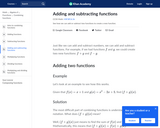
In this article, students learn how to add or subtract two functions to create a new function.
- Subject:
- Mathematics
- Material Type:
- Demonstration
- Reading
- Provider:
- Khan Academy
- Date Added:
- 02/28/2018

In this article, students learn how to add or subtract two functions to create a new function.
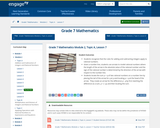
In this lesson, students recognize that the rules for adding and subtracting integers apply to rational numbers. Given a number line, students use arrows to model rational numbers where the length of the arrow is the absolute value of the rational number and the sign of the rational number is determined by the direction of the arrow with respect to the number line. Students locate the sum p + q of two rational numbers on a number line by placing the tail of the arrow for q at p and locating p + q at the head of the arrow. They create an arrow for the difference p - q by first rewriting the difference as a sum, p + (- q), and then locating the sum.

This short video and interactive assessment activity is designed to teach fourth graders about adding and subtracting money with pictures in columns.
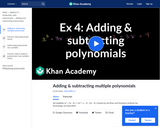
This video simplifies (x^3+ 3x - 6) + (-2x^2 + x - 2) - (3x - 4).

This is an interactive assessment and video designed to teach Adding and Subtracting (Numbers up to 20) - Word Problems to first graders.
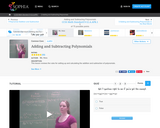
This lesson reviews the rules for setting up and calculating the addition and subtraction of polynomials.
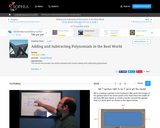
This lesson will provide real world examples that involve adding and subtracting polynomials.

This is a classroom worksheet that has problems for adding and subtracting rational expressions.
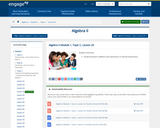
Students perform addition and subtraction of rational expressions.
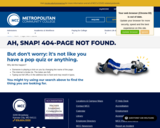
This resource provides an explanation on adding and subtracting rational expressions and 50 practice questions with solutions.
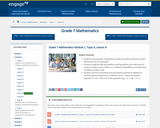
In this lesson, students use properties of operations to add and subtract rational numbers without the use of a calculator. Students recognize that any problem involving addition and subtraction of rational numbers can be written as a problem using addition and subtraction of positive numbers only. Students use the commutative and associative properties of addition to rewrite numerical expressions in different forms. They know that the opposite of a sum is the sum of the opposites (e.g., - (3 + (-4)) = -3 + 4.
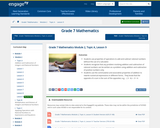
In this lesson, students use properties of operations to add and subtract rational numbers without the use of a calculator. Students recognize that any problem involving addition and subtraction of rational numbers can be written as a problem using addition and subtraction of positive numbers only. Students use the commutative and associative properties of addition to rewrite numerical expressions in different forms. They know that the opposite of a sum is the sum of the opposites; e.g., - ( 3 - 4) = -3 + 4.
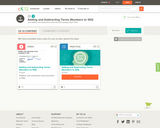
This short video and interactive assessment activity is designed to teach fourth graders about adding and subtracting terms (numbers to 100).
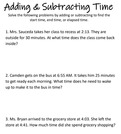
This resource is a worksheet for the standard 3.MD.1. It can be used as an exit ticket or as an independent practice. This could be used with a tech tool where students can draw directly on the document (Nearpod, Peardeck, Seesaw, Etc.)
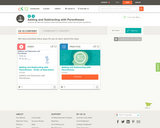
This short video and interactive assessment activity is designed to teach fifth graders about adding and subtracting with parentheses.
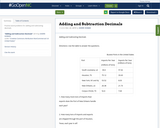
Practice word problems for adding and subtracting decimals.
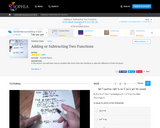
Students will learn how to combine like terms from two functions or take the difference of two functions.

Students will be running their own restaurant. Students will show what they know about adding three 2 digit numbers by dragging coins and adding money totals.
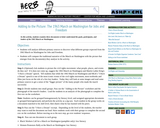
In this activity, students examine three documents to better understand the goals, participants, and leaders of the 1963 March on Washington.
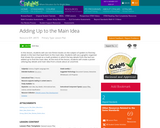
Students will use non-fiction books on the subject of spiders to find key details in the text that lead them to the main idea. Students will use a graphic organizer that shows the concept as a math problem in which the key details from the text are added up to find the main idea. At the end of the lesson, students will create a poster utilizing key details and main idea from a book about an arachnid.